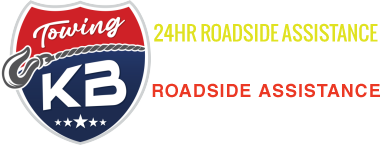When your vehicle breaks down or needs to be transported, knowing your towing options can save both time and money. Two common towing methods are flatbed towing and traditional hook-and-chain or wheel-lift towing. While both get your car from point A to point B, they differ significantly in safety, convenience, and cost. In this blog post, the experts from KB Towing Service provide a better understanding as to how these differences can help you choose the best option for your situation.
What is Flatbed Towing?
Flatbed towing involves loading your vehicle entirely onto a flat platform attached to a tow truck. The car is secured with straps or wheel locks, ensuring it stays in place during transit. This method is particularly ideal for vehicles with all-wheel drive, luxury cars, or those with low ground clearance, as it prevents unnecessary wear or damage to the tires, suspension, and drivetrain. Flatbed towing is widely regarded as the safest option for transporting vehicles over long distances.
Traditional Towing Methods
Traditional towing, including hook-and-chain and wheel-lift techniques, lifts either the front or rear wheels of the car while the other set remains on the road. Hook-and-chain towing uses chains hooked to the vehicle’s frame, while wheel-lift towing lifts the car with a metal yoke under the wheels. Although these methods are generally more affordable, they can cause potential damage to the vehicle if not handled carefully. Issues such as tire scrapes, suspension strain, or alignment problems can occur, especially for modern cars with advanced drivetrains.
Safety Considerations
Flatbed towing excels in safety because the vehicle is fully supported and secure. There’s no risk of tires dragging on the road or hitting curbs, making it suitable for both short trips and cross-country transport. Traditional towing, while effective for local or emergency situations, carries more risk, particularly if the tow truck operator is inexperienced or if the car has sensitive components. Choosing the right towing method can prevent costly repairs and ensure your vehicle arrives in pristine condition.
Cost Differences
Cost is often a major deciding factor. Flatbed towing is typically more expensive than traditional towing because of the equipment, labor, and higher safety level involved. However, many drivers find the additional expense worthwhile when considering the potential damage avoidance. Traditional towing methods may save money upfront, but repairs caused by improper towing can quickly outweigh the initial savings.
Preparing Your Vehicle for Towing
Before any tow, it’s important to prepare your vehicle properly. For flatbed towing, ensure the car is in neutral, the parking brake is disengaged, and all loose items are secured inside. For traditional towing, extra caution is needed: check the owner’s manual for specific towing instructions, especially for all-wheel-drive or low-clearance vehicles. Proper preparation helps prevent accidents, mechanical issues, or damage during transport, giving you peace of mind that your car will arrive safely at its destination.
Which Towing Method is Right for You?
Ultimately, the right towing method depends on your vehicle type, distance, and budget. Flatbed towing is the preferred choice for high-value, all-wheel-drive, or sensitive vehicles, while traditional towing may suffice for quick, short-distance moves or emergency situations. By understanding the differences between these options, you can make an informed decision and ensure your vehicle is transported safely and efficiently. Call KB Towing Service today if you are unsure which one is right for you. The professionals at KB Towing Service can help guide you through your decision to ensure proper treatment for your vehicle.




